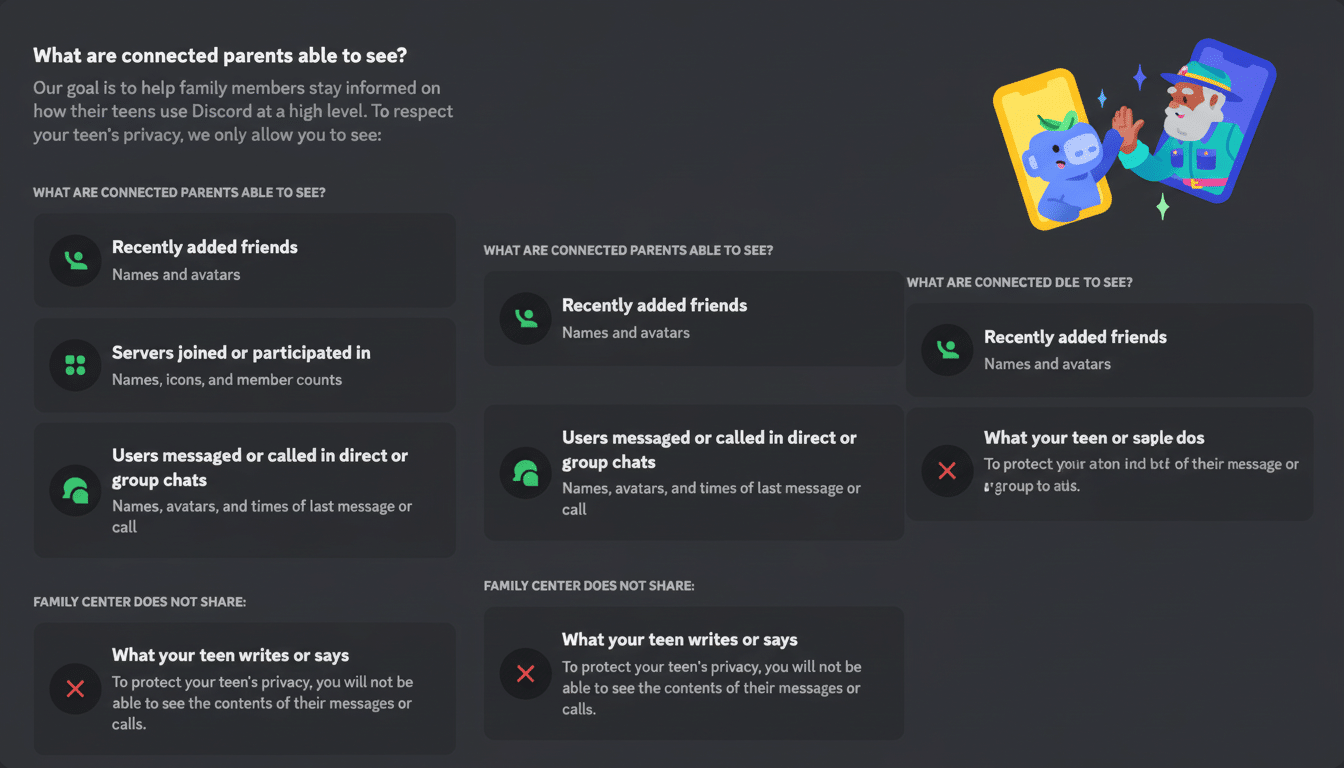Discord is adding a savvy new signal to the Family Center that parents and guardians can use: a weekly digest of their teen’s purchases. The update makes the total spent on items from the Discord Shop and Nitro subscriptions over the last seven days more visible, letting users see microtransactions without revealing what was said in messages or other personal info.
The bigger refresh also makes it clearer exactly how teens are using the service, such as total time spent in voice and video calls, and what the top five users and servers were that they engaged with over the past week.

It’s a nudge toward informed oversight rather than surveillance, with Discord selling the tools as a way to identify patterns on the rise before they become problems.
What the Discord Family Center update adds
And in Family Center, family organizers will now be able to see a running weekly total for how much is being spent on your teen’s account. The view is a collated total across Discord’s Shop, which sells digital goods and profile cosmetics, and Nitro, the company’s premium membership.
Usage insights go beyond spending. Parents can see how much time teens have spent in voice and video on DMs, group chats, and servers, as well as the top five users and communities they’ve interacted with for the past seven days. The idea is to illuminate who and where they are interacting without exposing the content of conversations.
Discord is also introducing new parental controls set and locked by guardians after their accounts are connected. These include who can direct message a teen, whether sensitive content is filtered, and decisions about how to use data like personalized ads. When a teen reports content, they have the option to notify their guardian about doing so, though Discord will not show them the reported content itself in order to keep it private.
Why spending visibility for teens on Discord matters
Microtransactions are a regular part of digital life for youngsters, reaching across games, creator platforms, and social apps. Industry analysis has long indicated that in-app purchases are the lion’s share of consumer spending on gaming, and social platforms sell more and more cosmetics, boosts, and subscriptions, which feel small individually but add up over time.

Regulators have issued warnings about kids inadvertently and impulsively making charges for years — the Federal Trade Commission in the last decade settled cases involving unauthorized purchases by kids with major app store operators. Ofcom in the UK also states that around a third of 8- to 17-year-old children have spent money on in-game items, showing how widespread microspending is.
Screen time trends increase the need for guardrails. Common Sense Media’s research finds that teens spend on average over eight hours a day on entertainment screen media, a backdrop that increases the number of opportunities to spend. Pew Research Center also includes Discord in its list of social platforms used by U.S. teens; adoption has been growing since the start of the pandemic as chat and voice communities filled the gap left by some in-person socialization.
Balancing parental oversight and teen privacy on Discord
Discord cares more about metadata and settings than content access. Guardians see totals and trends — how much is spent, voice and video time, top contacts and servers — not the messages themselves. Teens have to connect their accounts in order to be monitored, keeping a sense of permission and oversight in the process.
That’s consistent with advice from youth-safety advocates and legislators focused on appropriate design for children — without impinging on users’ own autonomous choices, such as parents being able to decide which apps their kids can use or content they should not be exposed to. In the case of social media and youth mental health, an advisory to which I contributed as a research scientist at Minnesota’s School of Public Health calls on U.S. platforms to provide families with tooling that strengthens open dialogue and informed decision-making. And safety hubs on the likes of Instagram and Snapchat have been reconfigured to act as supervision dashboards, controlling who can reach out and what content is screened.
How families can use Discord’s new spending oversight
Think of the weekly purchase total as an early warning system. A steep rise — the purchase of a cascade of Nitro gifts or dozens of cosmetics, for instance — can serve as an icebreaker for budgeting talks or checking out payment methods. To avoid surprises, many families supplement app-level oversight with purchase approvals provided by card issuers or mobile platforms.
- Put spending knowledge in conversations’ hands.
- Combine spending powers with communication control.
- Limit DM permissions for younger teens to “friends only,” turn on sensitive content filters, and review the top interactions list together from time to time.
- If a teen reports harmful content, encourage them to use the notify-guardian option and take steps forward together.
Finally, search for trends — not one-offs. Use of voice or video time for hours on end inside a single server, or with just a few people, could be a good community — or it might be worth checking in. The point of Discord’s update isn’t that the company will monitor literally every action taken by your kids, but that it can give families enough signal to course-correct early.

